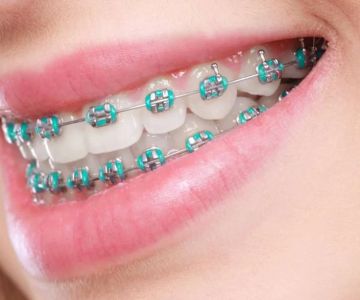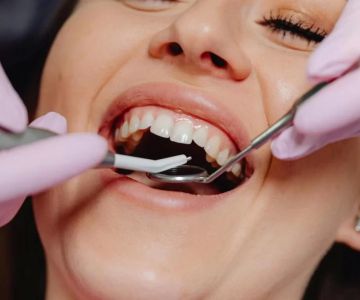How to Identify Early Stages of Oral Cancer and Its Symptoms
Oral cancer is one of the most common cancers worldwide, but it’s also one of the most preventable and treatable when caught early. Many people, however, are unaware of the subtle signs that can indicate the beginning stages of oral cancer. As someone who's been deeply involved in the dental health field, I can tell you that recognizing these early symptoms is key to ensuring a positive outcome. In this article, I’ll walk you through the common early signs of oral cancer, how to identify them, and what steps to take if you notice any concerning symptoms.
1. Understanding Oral Cancer and Its Importance
Oral cancer refers to cancer that develops in the mouth, tongue, throat, or other areas in the oral cavity. It’s a serious condition that can significantly impact your health if not detected early. In its advanced stages, oral cancer can spread to other areas of the body, making treatment more difficult. However, the key to successful treatment is early detection. The earlier the diagnosis, the higher the chance of recovery and survival. Understanding the risk factors and early symptoms can empower you to seek help sooner, making all the difference in the world.
Oral cancer is often linked to factors such as tobacco use, excessive alcohol consumption, a poor diet, and human papillomavirus (HPV) infection. If you’re at risk or have a family history of cancer, it's crucial to be aware of the early signs. Even if you're generally healthy, regular check-ups and self-examinations can go a long way in identifying issues early.
2. Common Symptoms of Oral Cancer
The early symptoms of oral cancer can be subtle and easily overlooked. That's why it's important to know exactly what to look for. Here are some of the most common signs that may indicate the early stages of oral cancer:
Persistent Mouth Sores
One of the most common symptoms is the development of persistent mouth sores or ulcers that do not heal. These sores may appear on the gums, tongue, or inside of the lips or cheeks. If you notice a sore that lasts more than two weeks and doesn’t show signs of healing, it’s time to get it checked out by a dentist or doctor.
Unexplained Pain or Tenderness
Pain or tenderness in the mouth or throat that doesn’t go away could be an early warning sign. This may include pain in the tongue, gums, or roof of the mouth. The pain might be localized to one area or spread across the mouth. Pay attention to discomfort that persists and doesn’t seem to be linked to other conditions like a cold or dental issues.
Red or White Patches in the Mouth
Another common sign of oral cancer is the appearance of unusual red or white patches inside your mouth. These patches, called leukoplakia (white) or erythroplakia (red), are usually painless, but they can signal an underlying issue that needs attention. If the patches are persistent and do not go away with normal oral care, it's essential to seek medical advice.
Difficulty Swallowing or Moving the Jaw
As oral cancer progresses, it may cause difficulty swallowing or moving your jaw. This could feel like your throat is tight, or it may feel as though something is obstructing your airway. Difficulty chewing, swallowing, or even speaking clearly could indicate that the cancer has begun affecting surrounding tissues.
Lumps or Swelling in the Neck
Swollen lymph nodes in the neck or the appearance of lumps around the jaw or neck area may also be signs of oral cancer. As the cancer spreads, it can affect nearby tissues and lymph nodes. If you notice any unusual lumps or swelling in the neck that doesn’t go away, it’s crucial to have them examined.
3. Risk Factors and Prevention Tips
While oral cancer can affect anyone, certain risk factors make some individuals more vulnerable. The most common risk factors include:
- Tobacco use: Smoking and chewing tobacco are major contributors to oral cancer. Quitting smoking can significantly reduce your risk.
- Excessive alcohol consumption: Drinking alcohol in excess increases your chances of developing oral cancer, especially when combined with tobacco use.
- HPV (Human Papillomavirus): HPV, particularly the HPV16 strain, has been linked to an increased risk of oral cancer.
- Age: Oral cancer is more commonly diagnosed in individuals over the age of 40, although it can occur at any age.
- Family history: A family history of cancer can increase the likelihood of developing oral cancer.
Prevention is the best way to combat oral cancer. Here are some important steps you can take to reduce your risk:
- Maintain good oral hygiene: Brushing, flossing, and regular dental check-ups can help catch potential issues early.
- Avoid tobacco products: Quitting smoking and using smokeless tobacco products is one of the most effective ways to lower your risk.
- Limit alcohol consumption: Reducing alcohol intake can help prevent the development of oral cancer.
- Get vaccinated for HPV: Vaccination against HPV can significantly reduce the risk of certain cancers, including oral cancer.
4. When to See a Dentist or Doctor
If you notice any of the signs mentioned above, it’s important to see a dentist or doctor as soon as possible. Early detection can make a huge difference in the outcome of treatment. Your dentist will perform a thorough examination of your mouth, throat, and neck to look for signs of cancer. They may refer you to a specialist for further testing if necessary.
Regular dental check-ups are essential not only for maintaining healthy teeth but also for detecting oral cancer in its early stages. Don’t wait for symptoms to worsen—take action as soon as you notice anything unusual in your mouth or throat.







 Westgate Dental Arts
Westgate Dental Arts Coventry Family Dental
Coventry Family Dental Familia Dental
Familia Dental Dr. Daniel S. Fife, DDS
Dr. Daniel S. Fife, DDS Dentistry At Suburban Square: Michael I. Wollock, DMD
Dentistry At Suburban Square: Michael I. Wollock, DMD Comfort Care Dental
Comfort Care Dental The Importance of Oral Health Education During Pregnancy for a Healthy Pregnancy
The Importance of Oral Health Education During Pregnancy for a Healthy Pregnancy Why Skipping Dental Checkups Can Lead to Bigger Oral Health Problems
Why Skipping Dental Checkups Can Lead to Bigger Oral Health Problems Advantages of Porcelain Dental Restorations
Advantages of Porcelain Dental Restorations Best Tips for Brushing Your Teeth Properly for Healthy Gums: Essential Techniques for Oral Health
Best Tips for Brushing Your Teeth Properly for Healthy Gums: Essential Techniques for Oral Health How Can Diabetes Cause Tooth and Gum Problems? Preventing and Managing Oral Health Issues
How Can Diabetes Cause Tooth and Gum Problems? Preventing and Managing Oral Health Issues Healthy Habits for Promoting Good Oral Health and Hygiene: Tips for a Healthy Smile
Healthy Habits for Promoting Good Oral Health and Hygiene: Tips for a Healthy Smile